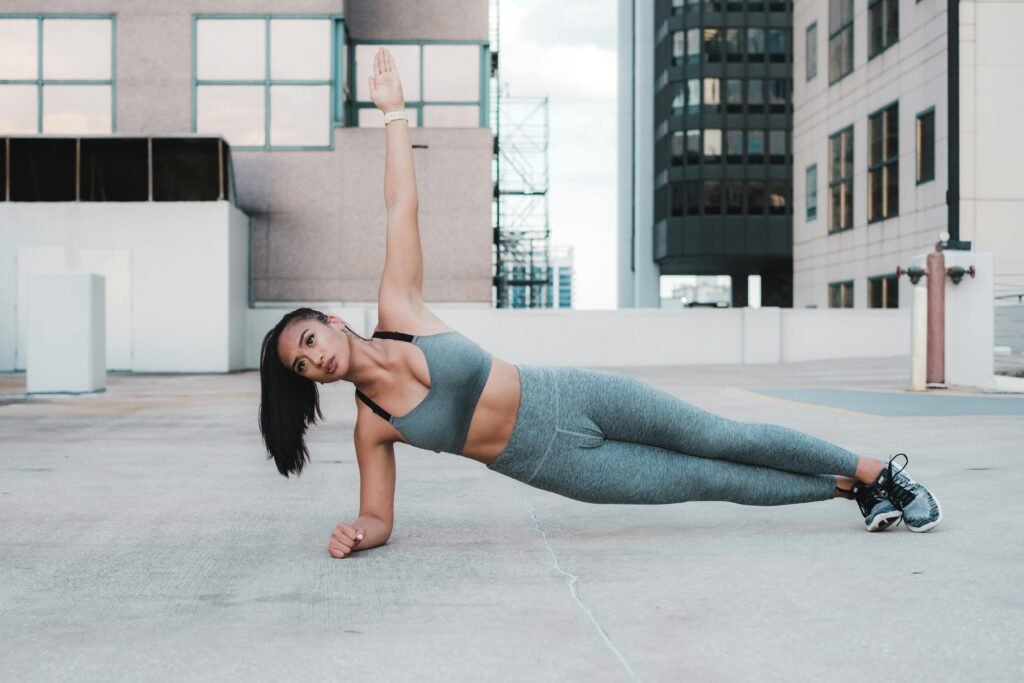Community changes behaviour. For women training for fat loss, strength, sport, or general health, the right social support increases adherence, reduces injury risk and creates sustainable lifestyle change. This long-form guide explores the evidence, psychology, tools, and step-by-step systems to build or join an effective fitness community.

TL;DR — Why community matters
Social support boosts consistency, increases enjoyment, accelerates skill-learning, and buffers stress — all factors that make fitness sustainable for busy women. Below you’ll find scientific context, practical strategies, sample programs, community templates, measurement KPIs, and downloadable assets to plug straight into your site or coaching program.
Why community matters for women’s fitness
Humans are social animals. Habits form easier when embedded in social contracts: classes, challenges, check-ins, and buddy systems create friction to quitting. For many women balancing work, family and personal demands, social structures reduce the decision burden — someone else sets the schedule, celebrates wins, and offers practical help (childcare swaps, shared recipes, short workouts that fit into nap times).
In practice, community helps in three big ways:
- Accountability — classes and partners increase attendance.
- Motivation — social reinforcement keeps motivation high when intrinsic drive dips.
- Knowledge sharing — peers share technique tips, time-saving meal prep ideas, and adaptation strategies for injuries or life events.
Research & evidence summary
The full literature is broad, but several reproducible findings are directly relevant:
- Higher adherence: Group-based exercise programs show improved adherence compared to solo intervention in randomized and quasi-experimental trials.
- Improved mental health: Social support reduces stress, anxiety and improves wellbeing — which in turn reduces dropout risk.
- Behavioral maintenance: Programs with ongoing social contact show greater longer-term habit maintenance than time-limited programs without community features.
These findings are particularly strong for women when programs are tailored to life stage (pregnancy, postpartum, menopause) and time constraints (short sessions, family-friendly times).

The psychology behind social support
1) Accountability and social contracts
When you tell others you’ll show up, you’re more likely to do it. Scheduled classes, a posted leaderboard, or daily check-ins create small social costs for skipping a session (explainable absence aside). Use these mechanics intentionally: fixed sessions (e.g., Monday 6:30 AM strength) produce better results than loosely organized “do it when you can” challenges.
2) Identity shift — “I’m someone who trains”
People adopt behaviors that match their identity. Joining a community labeled “women who lift” nudges members toward seeing themselves as lifters rather than casual exercisers. Language matters: encourage members to say “we train” or “I am a runner” to strengthen identity adoption.
3) Social learning and modelling
Observational learning speeds skill acquisition. When less experienced members see peers improving, it changes expectations for what’s possible — this is hugely motivating and reduces the fear of failure.
Types of communities and when to use them
Not all communities are the same. Choose a format that matches your goals, capacity and members’ lifestyles:
- In-person group classes — best for technique, social bonding and immediate feedback. Great for local meetups and postpartum groups.
- Accountability pods (2–6 people) — low admin, high accountability. Excellent for busy women who want a short, safe circle.
- Online communities (forums, FB groups) — scalable and flexible; good when members are geographically dispersed.
- Hybrid models — combine weekly in-person meetups with an online chat for daily check-ins.
How to find the right community
Start locally and online simultaneously — testing multiple options helps you identify a fit quickly:
- Local searches: Meetup.com, community center calendars, boutique studio trial classes, university/community boards.
- Social platforms: Instagram hashtags (e.g., #womenwholift + city), Facebook groups (search your city + “fitness”), Reddit subgroups for women’s fitness.
- Workplace: Ask HR — many companies are open to staff-run wellness pods.
- Trial approach: Attend two different group classes and one online challenge before deciding — give yourself data to evaluate.
How to build a women’s fitness community (step-by-step)
Below is a practical, repeatable framework you can use to start a high-value community with minimal overhead.
Step 1 — Define a specific purpose and audience
Clarity beats generality. For instance: “Busy professionals 30–45 who want 30-minute strength sessions” is a better target than “fitness for women.” Specificity helps you tailor times, tone, and program length.
Step 2 — Pick a single platform and rituals
Choose one main home for the group (WhatsApp for pods, Facebook or Mighty Networks for richer content). Decide rituals: Monday check-in, Wednesday movement video, Friday wins post.
Step 3 — Launch with a core cohort
Invite 8–20 people who fit the target profile. Small groups create trust and faster bonding. Offer initial members roles (welcome coordinator, content collector) so they feel ownership.
Step 4 — Deliver weekly value, not daily noise
Consistency wins. Deliver one meaningful piece of content per week: a short technique video, a 10-minute guided workout, or a simple meal prep tip. Supplement with daily micro-check-ins that are optional.
Step 5 — Scale with pods and leaders
When the group grows, split into pods to keep intimacy. Recruit and train volunteer leaders to own small groups; this helps scale without losing culture.
“Welcome! This group is for women who want short, practical strength and mobility sessions. Rules: be kind, no medical prescriptions, celebrate wins. Introduce yourself: name, goal, and one small win this week.”
Running sessions, moderation & content that sticks
1) Short, repeatable formats
Design sessions people can do consistently: 20–30 minute strength, 12–15 minute metabolic circuits, or 10-minute mobility flows. Predictable formats increase participation.
2) Content types that drive engagement
- Technique micro-videos (60–90s)
- Weekly micro-challenges (e.g., 10k steps 3x this week)
- Member takeovers — let a member share a recipe or mobility trick
- Monthly Q&A or guest coach session
3) Moderation & safety
Clear rules are essential: encourage kindness, ban shaming, moderate medical advice. Rotate moderators so no single person is burned out.

Sample 30-day community challenge (plug-and-play)
Use this structure to kickstart engagement: each day members post one short update (photo, emoji, or 1-line check-in). Keep it flexible and scalable.
Week 1 — foundation
- Day 1: Introduce yourself + baseline (one metric: steps, workout minutes, weight)
- Day 2: Short mobility routine (10 min)
- Day 3: Strength mini-session (20 min)
- Day 4: Recovery tip share (sleep/foam rolling)
- Days 5–7: Repeat & post one win
Week 2 — habit building
- Introduce a small nutrition habit (protein at two meals)
- Encourage members to post a “what I ate” photo once this week
Weeks 3–4 — consolidation & celebration
- Introduce a friendly leaderboard (steps or workout minutes)
- Host a live mini-class or guest Q&A
- Wrap-up with reflections, before/after measures and nominations for member-of-the-month
Plug-in weekly program (detailed for community posts)
Give members a clear weekly plan they can follow and post about. Use the templates below for daily posts.
Day A — Strength (30 minutes)
- Warm-up: 5 min brisk walk or dynamic movements (arm circles, leg swings)
- Main: 3 rounds — 12 goblet squats / 10 push-ups (incline if needed) / 12 single-arm dumbbell rows per side / 30s plank
- Cool-down: 5 min mobility (pec stretch, hip flexor stretch)
Day B — HIIT (20 minutes)
- Warm-up: 3–4 minutes light movement
- AMRAP 12 minutes: 10 mountain climbers / 12 squats / 8 explosive stepbacks
- Cool-down: 5 minutes walking + stretching
Day C — Mobility & Active recovery
- 15–20 minutes yoga or mobility flow focusing on hips, thoracic and shoulders
Ask members to post a short note after each session: “Done — how I felt (1–10) — 1 thing I learned.” This builds habit and content for the group.
Tools, apps & affiliate placeholders
Below are categories of tools to recommend inside your community. Replace each placeholder link with your affiliate URL or product page.
- Community platform: Mighty Networks, Circle, or a private Facebook group.
- Scheduling & booking: Calendly or Bookwhen for paid workshops.
- Tracking: Google Sheets template (downloadable PDF later) or a simple habit-tracker app.
- Supplements & gear: Protein powder, pull-up bands, yoga mats.
Measure success — KPIs for community health
Track simple, actionable metrics monthly. These numbers tell you whether the group is thriving or needs attention:
| KPI | How to measure | Target (example) |
|---|---|---|
| Active weekly participants | Count members posting/reacting weekly | >40% of members |
| Retention (3 months) | % members still active after 90 days | >65% |
| Attendance / completion | % of members completing weekly program | >50% |
| CSAT / net promoter | Brief monthly survey (1–2 questions) | Average rating >4/5 |
Use a simple Google Sheet to log these numbers. Share progress publicly in the group — transparency builds trust and creates recruitment content.
Scaling without losing intimacy
Communities die when they become noisy. Scale by cloning leaders and splitting the group into pods:
- Train volunteer leaders in the first 90 days.
- Split groups by availability (morning pod, evening pod) or goal (strength, weight-loss, mobility).
- Standardize onboarding: welcome pack, rules, 7-day starter tasks.
Common pitfalls & practical fixes
Pitfall: Over moderation or under moderation
Balance is key. Too much moderation kills authenticity; too little lets harmful behavior spread. Create clear, short community guidelines and a lightweight escalation ladder.
Pitfall: Growth without leadership
If the group grows fast, appoint leaders from active members with small responsibilities—this prevents founder burnout and preserves culture.
Pitfall: Too many commercial posts
Monetize carefully. If you use affiliate links or sponsored content, keep a 80/20 free-to-paid value ratio. Always disclose affiliate relationships to maintain trust.
Mini case studies — real-world examples and lessons
“Stroller Circuit” — a grassroots local group
Started by a new mother who wanted short outdoor workouts, this group focused on 25 minute sessions while babies napped or strolled. Critical success factors: reliable schedule, central park meeting spot, and an active Whatsapp group for quick updates. Result: 60% attendance rate over 6 months and strong friendships that led to shared childcare swaps.
“Women 40+ Strength Hub” — paid hybrid model
A coach launched a $10/month hybrid community with weekly prerecorded technique videos, one live Q&A per month, and a dedicated forum. The niche focus (40+) allowed targeted content on menopause-related hormonal changes, recovery, and injury prevention. Retention was high due to relevance and perceived specialist value.
Corporate pods — lunchtime movement
A small company introduced 4-person pods who completed a 12-minute workplace routine during lunch. HR tracked wellbeing metrics and noted fewer sick days. The minimal time investment and workplace endorsement were the keys.
Frequently asked questions
Do I need a gym to join a fitness community?
No — many communities focus on home workouts, walking groups, or short circuits that require zero equipment. Choose a group that matches your resource level.
How do I recruit the first members?
Start with friends, co-workers and local parenting groups. Offer a free 2-week challenge to attract people, and ask early members to invite one friend each.
What if I don’t have time to moderate?
Use lightweight rules and empower volunteers. Automate reminders with scheduling tools and pin resources so members are self-serve.
Ready to start? Quick action plan
- Decide the group focus, time and platform.
- Invite 8–20 founding members and run a 30-day challenge.
- Measure 3 basic KPIs monthly (attendance, engagement, retention).
- Celebrate wins publicly and recruit leaders when momentum grows.
Download Your Free Womens Fitness Community Tracker (PDF)
Track your KPI’s, Workouts, and reflect on your weeks with our printable tracker.
Download Now


